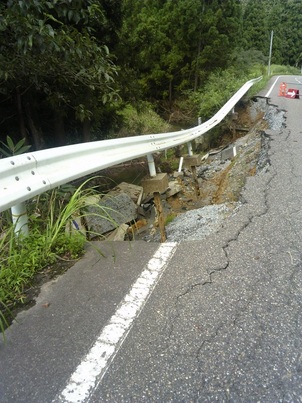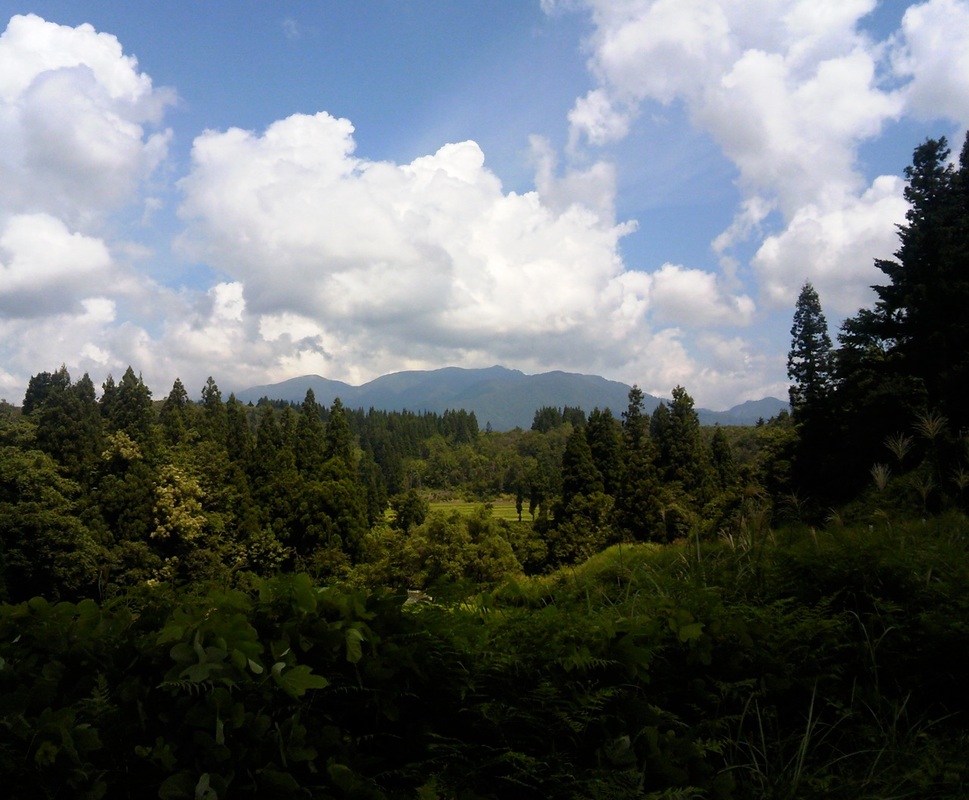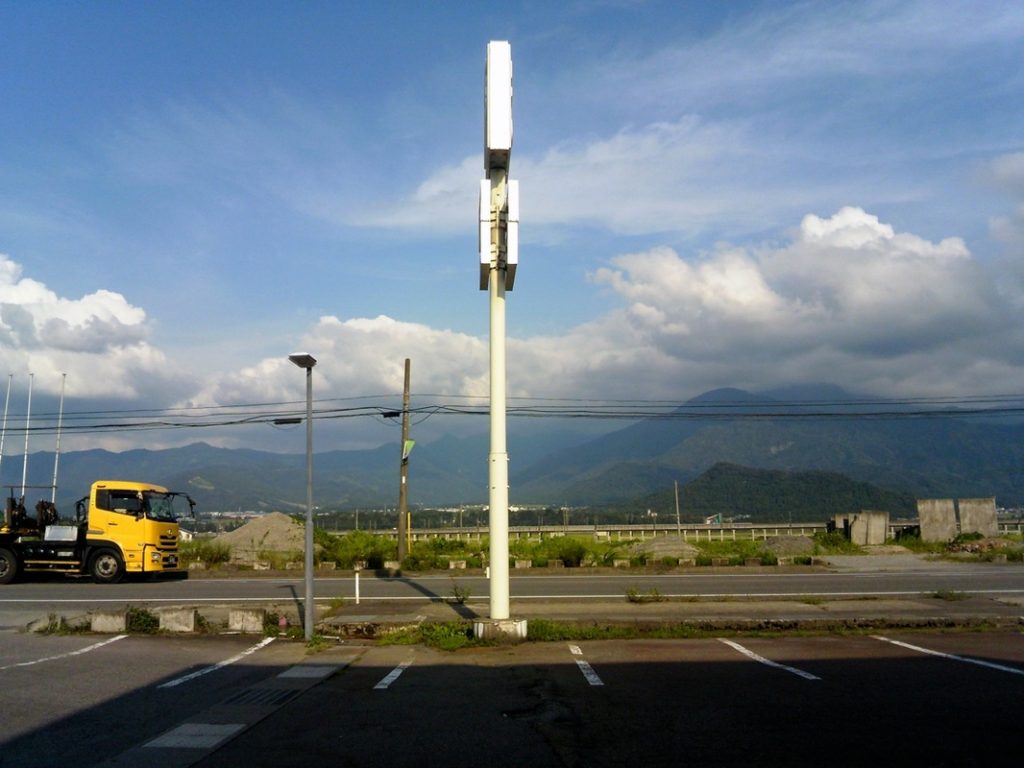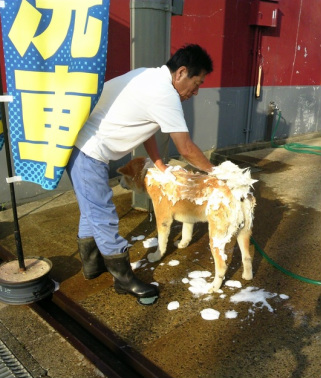I woke up at about 6.30, got dressed, rolled up my sleeping bag and camping mat and unzipped the tent flap, only to find myself completely surrounded by school children. There was a sort of Mexican stand-off moment where we all stood and stared at each other, before I broke the silence by whispering a polite ‘good morning’ (somehow it didn’t feel right to raise my voice) and almost tip-toed my way to the car park to start loading the bicycle.
‘That was amazing,’ I said to one of the volunteers who was supervising them. ‘I didn’t hear a thing.’
‘Ah yes, that’s an activity where we ask them to explore what’s around them and write about it, but without talking to each other,’ he said. ‘This weekend is a kind of nature adventure, so last night we watched the sunset and lit an avenue of candles on the hillside, and later this morning we’ll be hiking into the woods and looking for plants and wildlife.’
The volunteers were from an organisation called JCI (Junior Chamber International, aka Worldwide Federation Of Young Leaders And Entrepreneurs) and all worked for small businesses in Sanjoh. The Sanjoh branch of JCI calls itself Tsubamé, which means ‘martin’ or ‘swallow’ (as in the bird), and whose kanji has an attractive symmetry to it:

Although the Tsubamé Sanjoh website is in Japanese, you can see some pictures of the children’s nature adventure here – on about the fifteenth photo from the top of the page, my tent is just out of shot to the left.
Speaking of which, it’s time for a short commercial break:
If you’re ever thinking of purchasing a tent, allow me to recommend the excellent Snow Peak range. Since 2005, my Snow Peak Landbreeze Solo has accompanied me halfway around Japan without so much as a leaky seam, a broken pole or a ripped flysheet, and while I bought it primarily because it weighs less than two kilos, it is also easy to assemble, thoroughly waterproof and can be purchased with an inner tent whose top half is more like a mosquito net (this allows a through draft and keeps the inside from feeling like a sauna, as can often happen with cheaper tents on a summer’s morning).
Coincidentally enough, if I hadn’t taken a wrong turn on the way south from Sanjoh, I would have ridden straight past Snow Peak HQ, which as well as the company factory is home to a Camp Field, Natural Lifestyle Store and something called a Creative Room. Still, I didn’t go too far in the wrong direction, and passed yet more flood damage (bad omen alert!) before a mid-morning break at Tochio michi-no-eki.

Michi-no-eki (道の駅 / literally ‘road station’) are the Japanese equivalent of a roadside services, although imagine, if you will, how much more stimulating a visit to Moto or Welcome Break would be if you could buy locally produced fruit, vegetables, cakes, snacks and souvenirs. And imagine how much more value for money you would get if stallholders were allowed to sell takeaway food from the car park. Here in Tochio, as well as a gift shop with all manner of Niigata specialities, there was a van outside selling aburagé (油揚げ / deep-fried tofu), which like the best Belgian pommes frites had been deep fried not once but twice, and was the most delicious thing I ate on the entire holiday (not something you will hear anyone say after a visit to Watford Gap Road Chef).
‘Good, isn’t it?’ said a stallholder from a craft market that was also taking place next to the aburagé van. ‘A young lad passed through here the other week, you know. He was cycling the whole west coast from north to south. And a few months ago, when I turned up first thing in the morning there was a cyclist camping on the grass behind the main building. Are you going far?’
‘To Ibaraki eventually.’ I dug out the Mapple and showed him the zig-zagging route I had planned, through the mountains and back into Fukushima Prefecture.
‘I’m pretty sure the road’s closed at Kanéyama because of the floods,’ he said.
‘That’s OK, I was going to turn right before that and head south east.’
I probably should have had two helpings of aburagé, as the road from Tochio led straight to a mountain pass. On the lower slopes I overtook a small tractor-trailer with a scooter on the back. Why didn’t the man who was driving it repair the scooter first and then ride it to wherever he was going, I wondered, only to hear the sound of the same tractor again about ten minutes later. He eventually passed me with a smile and a wave in what felt like slow motion, as by this point we were both travelling at approximately walking speed.

As I was admiring the view from the pass, two cyclists on racing bikes appeared wearing the full compliment of helmets, wraparound shades and matching lycra shorts and shirts.
‘That was quite steep, wasn’t it?’ said the older of the two, who didn’t even appear to have broken sweat on the way up. ‘About five per cent, I should think.’
‘It felt steeper than that to me,’ I said between gulps from my water bottle. ‘Where are you going from here, anyway?’
‘We live near Sanjoh, so we’re doing a round trip – probably about seventy-five kilometres in all. How about you?’
‘I’m heading for Route 252.’
‘We’re going to the michi-no-eki on 252 for lunch. I could be wrong, but I think the road’s still closed beyond there.’
‘You mean because of the floods? Oh well, I can always take Route 352 instead.’
Sure enough, there was an automated sign above Ichihirosé michi-no-eki that read tsuu-koh-domé (通行止 / road closed), and one of the waitresses in the cafeteria was acting as a kind of voluntary traffic information guide.
‘Are you sure I can’t get through on a bicycle?’ I asked her.
‘I’m afraid not,’ she said.
‘How about Route 352?’
‘That’s closed as well, unfortunately.’
My only option now was to head even further south and cross from west to east through Nikko, which would involve climbing to the Shiisaka Pass at 740 metres above sea level, the Mikuni Pass at 1076 metres and the Konsei Pass at a giddy 1880. Taking such a long detour meant that my mathematical blunder – of thinking that I had ten days before the end of the summer holidays when in actual fact I had eleven – was beginning to look like an inspired incidence of foresight.
Probably because they felt sorry for me, the two cyclists from the pass gave me one of their energy gels when they had finished their lunch (energy gels combine the taste of Lucozade with the texture of rice pudding, and are all the rage with athletes these days). They then whizzed off down the road, although I caught up with them several more times in the next hour or two – in fact, after saying, ‘Fancy seeing you here!’ for about the third or fourth time and being presented with at least two more energy gels, the situation began to get a little awkward.

_By the time I had shaken them off I was back on the plains, and so far south that I had to throw away my battered old Tohoku Mapple (originally given to me by Tokidoki Tokyo) and buy the Kanto edition instead. The scenery wasn’t quite so inspiring as it had been that morning, but I did see this man making rather novel use of the car wash at a gasoline stand (‘We come here at least once a week,’ he said, ‘otherwise the dog starts to smell bad.’).

Rather than trying to find a campsite, my aim now was to cycle as far as I could and pitch the Snow Peak somewhere inconspicuous, an activity that is known as nojuku (野宿 / literally ‘field stay’).
Many touring cyclists nojuku as a way of saving time and money, but I had only done so on one previous occasion, and while the rational part of me knew that no one would so much as bat an eyelid if I set up camp in the woods or in a disused rice field, the irrational part of me was worried that the local yakuza might burn my tent to the ground, throw the Rock Spring in the nearest river and set upon me with baseball bats.
By about 6pm I had reached Shiozawa, and in the TV room at the local onsen, asked the family at the next table if they could recommend a suitable spot for nojuku-ing. After some thought, the father – whose Japanese, incidentally, was as crystal clear and comprehensible as an NHK newsreader – gave me directions to the local park, which he said was quiet, spacious and had a toilet block that would be open all night. So, once the onsen had closed for the evening that’s exactly where I headed, although I suspected the toilets probably wouldn’t be western style.





